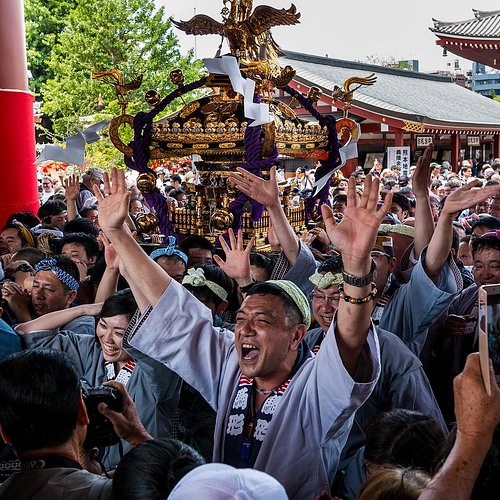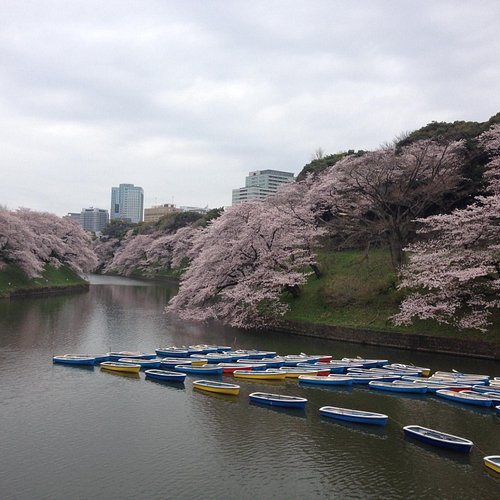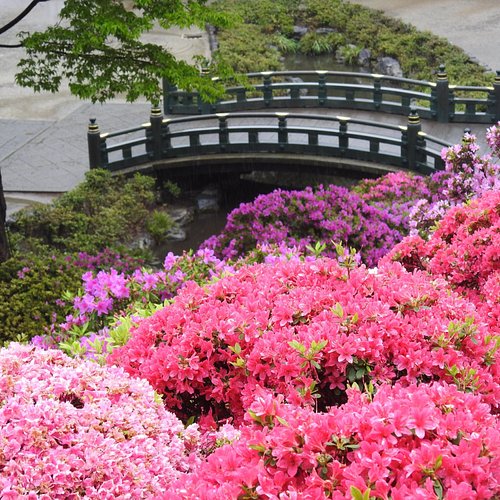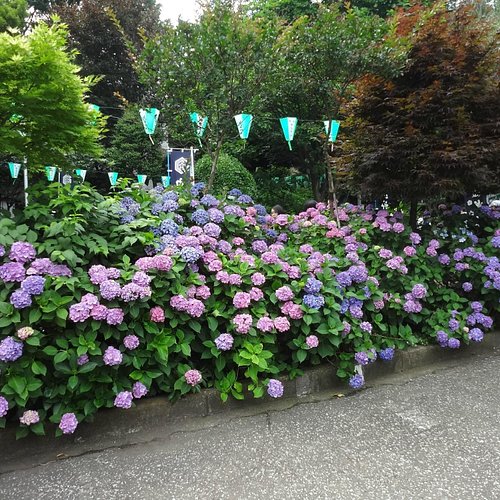What to do and see in Tokyo Prefecture, Kanto: The Best Cultural Events
Discover the best top things to do in Tokyo Prefecture, Japan including Marunouchi Illumination, Sanja Matsuri, Kokufu Bonsai-Ten, Chiyoda Cherry Blossom Matsuri, Bunkyo Azalea Matsuri, Bunkyo Hydrangea Matsuri, megurogawa MINNA no ILLUMI, Mitama Matsuri, Daruma Ichi, Omotesando Illumination.
Restaurants in Tokyo Prefecture
1. Marunouchi Illumination
Overall Ratings
4.5 based on 103 reviews
The Illumination along Nakadori in Marunouchi runs from November to February every year and reflects the style and classy atmosphere of the surrounding neighbourhood. There are few gimmicks and the organisers rise above the continuing arms-race in Tokyo Illuminations with an understated display that complements Nakadori's European-style boulevard. The many trees along Nakadori are tastefully lit with eco-friendly LED bulbs, bathing the area in the signature 'champagne gold' colour that says everything about the luxury designer shops and financial powerhouses lining the street. The flagstones and cobbles, the sophisticated sculpture, the myriad of shopping and dining complexes, art galleries, luxury hotels and mixture of glitz with classical facades all conceal what used to be a rather staid and conservative business district. Before that, Marunouchi ('within the enclosure') was within the outer moat of Edo Castle and was the home of the most powerful feudal lords during the Edo period.
2. Sanja Matsuri
Overall Ratings
4.5 based on 71 reviews
Sanja Matsuri is one of Tokyo's three great summer festivals. It takes place late in May and celebrates the founding of Sensoji Temple in Asakusa. The festival has been running for over 700 years and today draws about two million visitors to the neighbourhood over the course of three days of processions and dances leading up to a parade of three enormous Mikoshi (portable shrines) carried precariously on the shoulders of locals. The shrines are ornate with black lacquer and gold leaf and elaborate purple and vermilion ropes, and weigh about 1 ton each. There's an incredibly charged atmosphere as the people carrying them shout in rhythm and bounce and jostle the shrines to wake up the spirits inside and encourage them to spread luck and prosperity throughout the surrounding neighbourhoods. The mood of celebration and street party atmosphere is packed with the sights and sounds of formal processions with ancient costumes and traditional music, geisha and taiko performances, yakuza gangsters showing off their tattoos, all mixed with the aroma of hundreds of impromptu food stands in the streets.
3. Kokufu Bonsai-Ten
Overall Ratings
4.5 based on 35 reviews
First held at the Tokyo Metropolitan Art Museum in 1934 with the aim of improving bonsai art and developing traditional Japanese culture, the "Kokufu Bonsai Exhibition" has a history of more than 80 years. On display at the venue are the prized creations of selected bonsai enthusiasts. And after rigorous examination of such factors as beauty and condition, the most outstanding works are presented with the Kokufu Award. The oldest and the largest bonsai exhibition in Japan, it is widely known at home and abroad as the place to see the best bonsai in the world.
4. Chiyoda Cherry Blossom Matsuri
Overall Ratings
4.5 based on 57 reviews
The Chiyoda Cherry Blossom Matsuri is held when cherry blossoms are in bloom at Chidorigafuchi Moat, Yasukuni Shrine, and Kanda Shrine, all famous cherry blossom spots. In the evening, the trees are lit up along the Chidorigafuchi walking path and you can rent a rowboat at the Chidorigafuchi boat pier and see the lit-up flowers from the water. Meanwhile, Yasukuni Shrine's Sakura Festival has many stalls, attracting many visitors. On the weekend, free shuttle buses run between the major cherry blossom spots.
Reviewed By SandeepGupta75 - New Delhi, India
This was the amazing visit to Cherry Blossom garden in Tokyo.. the cherry blossom flower only last for 15 to 17 days only and this is the most beautiful site you can see once in Tokyo. A must visit place
5. Bunkyo Azalea Matsuri
Overall Ratings
4.5 based on 41 reviews
The Bunkyo Azalea Matsuri is held annually from early April to early May at Nezu Shrine. This is the only time people can enter the shrine's azalea garden. The large 6,600-square-meter garden is filled with about 3,000 colorful azaleas in red, pink, purple, white, etc. Since the 100 varieties of azalea bloom at different times, the garden looks different each time you visit. There are also unusual species of azalea such as the dark red azalea (karafune) and windmill-shaped flowers (hanaguruma).
6. Bunkyo Hydrangea Matsuri
Overall Ratings
4.5 based on 28 reviews
Held from early to mid-June, the Bunkyo Hydrangea Matsuri is one of Bunkyo Ward's Big Five Flower Festivals. Over 3,000 hydrangea colorize Hakusan Shrine and neighboring Hakusan Park. People can also climb up the Fuji mound that is normally closed to the public. Also, since Hakusan Shrine is known for the god that stops toothaches, toothbrushes are memorialized during the festival.
7. megurogawa MINNA no ILLUMI
Overall Ratings
4.0 based on 53 reviews
Along the Meguro River, trees burn bright blue and pink for the Illumination festivities. Crafted to turn the drab winter scenery into a dreamscape that delights the imagination and charms the senses, thousands of LED lights are used to brighten the river walk during the Meguro Illumination. Most impressive of all the displays is the "Sakura Namiki" Illumination, which singularly utilizes nearly 160,000 LEDs to recreate the springtime burst of delicate magenta cherry blossoms. Also unmissable is the "Kodomotachi no Yume Tree", or Children's Dream Tree, constructed from recycled bottles and lit by the green energy created by passing foot traffic.
8. Mitama Matsuri
Overall Ratings
4.0 based on 56 reviews
Held at Yasukuni Shrine, the Mitama Matsuri festival is one of Tokyo's great Obon festivals, held to honor ancestors. 30,000 bright paper lanterns line the walk to the main shrine, throwing delicate and haunting light onto the footpaths. Mikoshi shrine parades and traditional song and dance troupes take to the street over four days of celebration. As it is a festival of the dead, sometimes pop-up haunted houses are incorporated.
9. Daruma Ichi
10. Omotesando Illumination
Overall Ratings
4.0 based on 55 reviews
The Omotesando Illumination that runs from December to January remains a popular attraction but is far more restrained than the bells and whistles that competing illuminations in Tokyo are innovating each year (most notably at Tokyo Midtown). That said, the area has so much style and history, that the classy boulevard and stylish and quirky backstreets need no further gimmicks to romance and charm visitors. Omotesando dori is similar in design to the Champs-Élysées in Paris but with a distinct Japanese style. The tall zelkova trees beloved of Haruki Murakami are festooned with romantic lights, the wide sidewalks throng with couples and fashionistas there to be seen, and the luxury brand shops are all backed by a long list of world class contemporary architecture. The boulevard was designed to lead directly to Meiji Shrine and in some ways expresses the triumph of the Meiji Emperor's plan to open Japan to the rest of the world.










